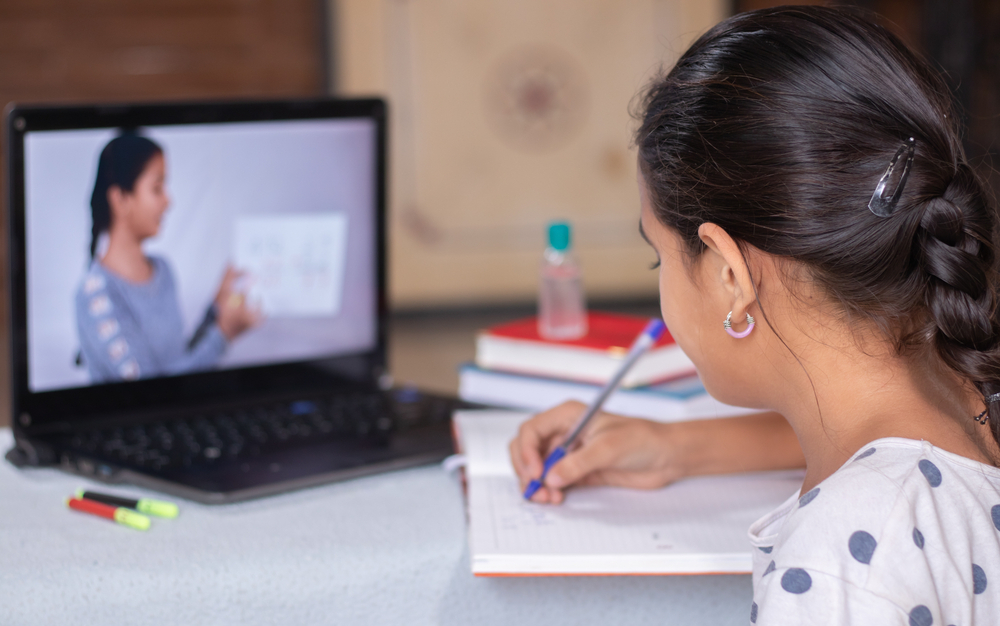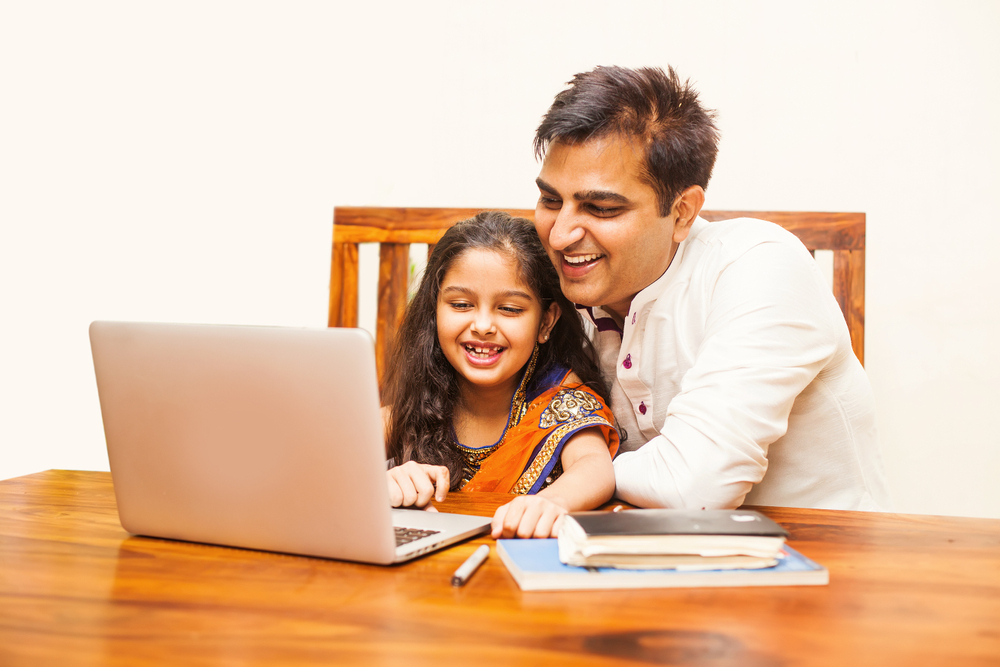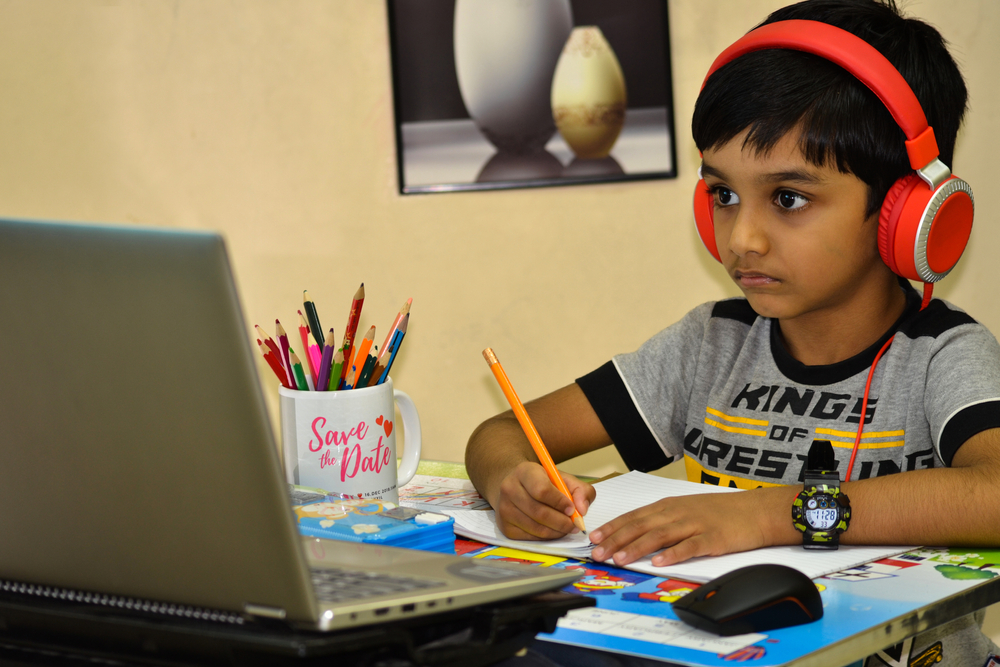
With the new normal around us, everything has a new approach. Businesses are operating online, people are shopping online, and studies have become online too. Thankfully we have the Internet which helped us manage and get all the essential supplies and medicines. When it comes to education, yes, it has to be continued and halting the learning process is not a healthy choice.
At Sanskriti Kids and Sanskriti The School, we follow the new normal. We managed to complete the syllabi by teaching our kids online using digital platforms. And it was a success! With the current situation, one can hardly think about reopening schools. To help our students with their studies, we introduce a new approach very similar to Hybrid Learning that will help them note down their lessons.
You may ask, what is Hybrid Learning? It is a combination of online and offline studies. It includes face-to-face classroom instruction delivered with online activities. And the best route, according to research, is when the hybrid instruction allows students to interact with content and engage in learning activities. The engagement can be before, during, and after the face-to-face class.
Since the school is shut and studies are necessary, we have to continue the teaching, and for this, we need parents to collaborate with us. But how are we going to work on this?
As Virtual Classrooms become the new normal, we need parents to help children navigate through this novel way of learning. To help you (parents) with this regime, here are some tips for you to create a conducive atmosphere at home that will help the children gain the maximum out of the Virtual Classroom experience. Let us take a look at the much-needed dos and don’ts.
 Do’s:
Do’s:
- Motivate your child to attend the classes and encourage them to maintain the zeal towards learning.
- Ensure that your child has taken a bath, had his/her breakfast and is ready for the virtual school.
- Provide your ward with required technical bandwidth. Using devices with bigger screens such as iPads, tablets or PC.
- Make sure that the devices are placed on the table rather than on lap, preferably at a 10 to 30-degree angle below eye-level. It reduces the neck strain.
- Make your ward sit at a distance of 1 and ½ feet to 2 feet from the screen with their back straight. Ask them to avoid slouching.
- Provide a dedicated place for the child to attend to his/her online.
- Adjust the brightness of the screen that is comfortable to your child’s eye. Too bright, it leads to unwanted glare. Too dim, unwanted eye strain.
- Please turn off the video and audio during the class for a better learning experience.

Don’ts:
- Do not question the teacher in your child’s classes. Encourage your ward to be confident in asking questions to the teacher.
- Don’t let your child ‘skip’ the online classes or suggest that everything would be repeated once the school reopens. Your child must pay attention during the classes.
- Don’t let your little one drift towards the screens.

Few basic rules to be followed are:
- Set A Time Table: As home-based learning will be every day, students need to follow a time table to maintain discipline. It will ensure that the child is punctual and attends the lessons. It will also be helpful to them to complete their daily chores like bathing and breakfast before joining the session. The routine will help them focus well on the lessons, and they need not leave the class repeatedly.
- Getting Ready For The Class: You can help your child in organising the material required for the lesson before the virtual classroom sessions begin. Since they take place on devices, parents must remind the children to keep the devices charged and ready to use before the class starts so that he or she can learn without any hassles midway such as a low battery.
- Create A Peaceful Atmosphere: Students and parents should not treat virtual classes as a stop-gap arrangement or filler. Students are learning various concepts, theories and formulae and covering parts of the yearly syllabus during these sessions. They need the same amount of concentration as goes into a physical classroom in the school. Thus, parents should create a peaceful learning atmosphere at home.
- Be Around: As a parent, you should be around your kids while they use digital devices and technology until they reach an age where they understand the good and bad of the virtual services. Kids these days may not need support in as how to use the technology or devices, it is advised that you keep an eye out for anything that they need help with. For example, they need your help when there is a technical glitch during the virtual session and need one of the adults to solve the issue. Thus, it is a good idea to be around and keep checking if the child needs any help.
- Maintaining Healthy Diet & Routine: Food rich in vitamins and minerals will keep your child active and healthy. Fruits, vegetables, dry fruits, etc., are a rich source of essentials that will keep their energy high. Also, cut down on screen time with less TV and more physical activity such as yoga, exercise or playing.




